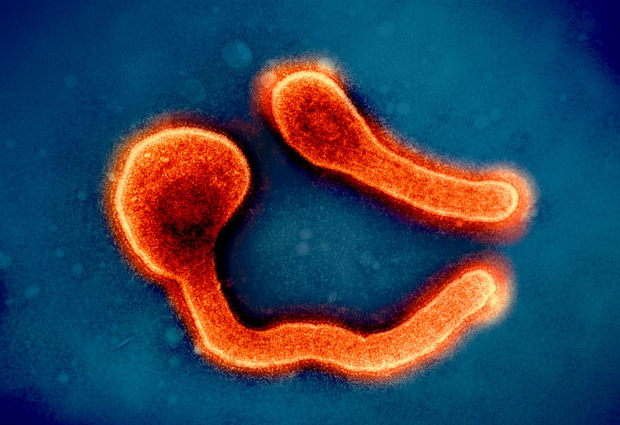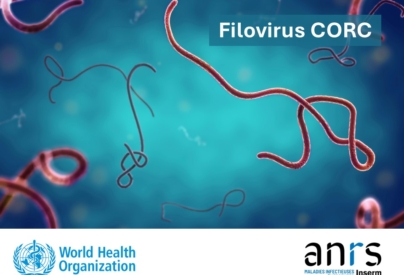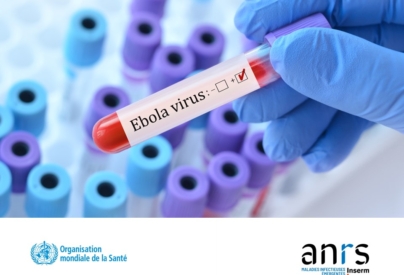
Filovirus Emergence unit
Status: active - level 1
Last updated on 13 October 2025
Filovirus: the situation in a nutshell
- In January 2025, two filovirus outbreaks occurred on the African continent: a Marburg virus disease outbreak in Tanzania and a Sudan virus disease outbreak in Uganda.
- On September 1, 2025, the Democratic Republic of the Congo reported an Ebola Virus Disease (EVD) outbreak in Kasai Province, in the southwest of the country. As of September 13, 2025, 81 suspected cases (including 28 deaths) had been recorded, with initial nosocomial transmission followed by community spread.
The Filoviridae family comprises single-stranded RNA viruses responsible for acute hemorrhagic fevers with high lethality, such as Marburg virus disease and Ebola Virus Disease (EVD). EVD is caused by viruses of the genus Orthoebolavirus, including Bundibugyo virus, Sudan virus, Taï Forest virus, Reston virus, and Zaire ebolavirus. The case fatality rate ranges from 25% to 90%, depending on the outbreak.¹
Stay updated on filovirus scientific developments
As part of the ANRS MIE Emergence programme and the CORC Filovirus program, the agency publishes a weekly scientific review on filoviruses, with a particular focus on Sudan virus—responsible for Ebola virus disease—and Marburg virus, providing updates on the most recent research findings.
In particular, you will find in the scientific review available for download:
- a summary of the epidemiological situation ;
- recent scientific articles published in peer-reviewed scientific journals;
- recent articles and press releases;
- official recommendations from health agencies ;
- a brief overview of epidemiology, virology, clinical aspects, treatment and prevention
Download the scientific review
Epidemiological situation of filoviruses
Ebola Virus Outbreaks
Since the first emergence of Ebola in 1976, with simultaneous outbreaks in South Sudan and the Democratic Republic of the Congo, a total of 42 Ebola outbreaks have been reported in Africa. Among them, 31 were caused by Ebola virus (EBOV)—also known as Zaire ebolavirus—resulting in 23,045 cases and 14,885 deaths (CFR 65%). Additionally, 8 outbreaks were attributed to Sudan virus (SUDV), with 956 cases and 503 deaths (CFR 53%).
The sporadic nature of these outbreaks suggests a probable zoonotic origin, although human-to-human transmission has been well documented.²
Marburg virus in Tanzania
- On January 14, 2025, a Marburg virus (MARV) outbreak was reported in the Kagera region of Tanzania, with 8 deaths among 9 reported cases. By February 14, 2025, Tanzania reported a tenth case (2 confirmed, 8 probable), bringing the total to 10 deaths (CFR 100%).
- On March 13, 2025, the Ministry of Health of the United Republic of Tanzania declared the official end of the Marburg virus disease (MVD) outbreak. This declaration followed two consecutive incubation periods (42 days in total) with no new detected cases since the last reported case.
- This outbreak occurred only one month after the WHO declared the end of an MVD outbreak in Rwanda, which lasted three months and resulted in 15 deaths.⁵ Additionally, in March 2023, Tanzania had already reported its first Marburg outbreak in the Kagera region, with a total of 9 cases.
Sudan virus in Uganda
- On January 30, 2025, the Minister of Health of Uganda declared an outbreak of Sudan virus disease (SVD) following the confirmation of a case in Kampala. By March 5, 2025, an additional 12 confirmed cases and 2 probable cases were reported, bringing the total to 14 cases across 6 districts (Figure 2), with 4 deaths (CFR 29%). Among these 14 cases, 8 patients have recovered since the outbreak began.
- Following the latest confirmed cases, 192 high-risk contacts were identified and placed under active surveillance, in addition to the 308 previously identified contacts.⁶
- In response to this outbreak, and with the support of the WHO, the Uganda Virus Research Institute (UVRI) launched a randomized vaccine trial—TOKOMEZA SVD—within four days. The trial evaluates the candidate vaccine rVSV-SUDV, with vaccination offered to identified contacts. This is the first outbreak-period trial assessing the clinical efficacy and immunogenicity of a single-dose vaccine against SUDV.⁶
Zaire ebolavirus in the DRC
- On September 1, 2025, the Democratic Republic of the Congo reported an outbreak of Ebola Virus Disease (EVD) in Kasai Province, in the southwest of the country.
- The index case, a 34-year-old pregnant woman, died after presenting with fever, hemorrhages, and multiorgan failure. As of September 13, 2025, 81 suspected cases (including 28 deaths) had been recorded, with initial nosocomial transmission followed by community spread. Samples analyzed at the INRB in Kinshasa confirmed EBOV infection, and sequencing suggested a zoonotic origin.7
- Congolese authorities, supported by WHO and Africa CDC, implemented response measures including case isolation, contact tracing, community awareness, and the deployment of Ervebo vaccine doses. WHO assessed the public health risk as high at the national level, moderate at the regional level, and low at the global level.8
WHO and ANRS MIE actions on filoviruses
- Scientific Coordination: In 2024, ANRS MIE implemented a coordinated initiative on viral hemorrhagic fevers, chaired by Sylvain Baize, Marie Jaspard, and Abdoulaye Touré. This strategic group focuses particularly on scientific research related to filoviruses. Through its dedicated working groups (therapeutics, wildlife, vaccines), it aims to foster the emergence of research projects within the framework of international collaborations, primarily with partners in Africa.
- Filovirus CORC: As part of its long-term commitment with WHO, the coordination of the Filovirus CORC has been entrusted to ANRS MIE. The CORCs are international networks of research institutions with the mission of strengthening global pandemic preparedness through collaborative research, knowledge sharing, and the rapid development of countermeasures. ANRS MIE, WHO, and all experts from the Filovirus CORC are currently engaged in revising research and surveillance priorities for filoviruses (WHO-AFIRM).
- Development of 10 Ebola research priorities defined with the WHO: following the declaration of a new Ebola epidemic in the Democratic Republic of Congo, ANRS MIE and the WHO brought together experts from the CORC filovirus on 5 September 2025. Together, they defined ten research priorities to support the immediate response and strengthen preparedness for future epidemics.
Bibliography
- Izudi, J. & Bajunirwe, F. Izudi J, Bajunirwe F. Case fatality rate for Ebola disease, 1976-2022: A meta-analysis of global data. J Infect Public Health. 2024 Jan;17(1):25-34. doi: 10.1016/j.jiph.2023.10.020.
- CDC. Outbreak History. Ebola https://www.cdc.gov/ebola/outbreaks/ (2024).
- L’OMS prévoit de recenser les agents pathogènes susceptibles de provoquer de futures flambées et pandémies. https://www.who.int/fr/news/item/21-11-2022-who-to-identify-phttps://www.who.int/publications/m/item/a-who-strategic-research-agenda-for-filovirus-research-and-monitoringathogens-that-could-cause-future-outbreaks-and-pandemics.
- This document describes a long-term global strategy for filovirus research and monitoring. https://www.who.int/publications/m/item/a-who-strategic-research-agenda-for-filovirus-research-and-monitoring—–(who-afirm)
- Marburg Virus Disease–United Republic of Tanzania. https://www.who.int/emergencies/disease-outbreak-news/item/2025-DON554.
- Sudan virus disease – Uganda. https://www.who.int/emergencies/disease-outbreak-news/item/2025-DON558.
- WHO. Ebola virus disease – Democratic Republic of the Congo https://www.who.int/emergencies/disease-outbreak-news/item/2025-DON580
- CIDRAP. Ebola vaccine arrives in DR Congo hot spot as illnesses, deaths rise https://www.cidrap.umn.edu/ebola/ebola-vaccine-arrives-dr-congo-hot-spot-illnesses-deaths-rise



